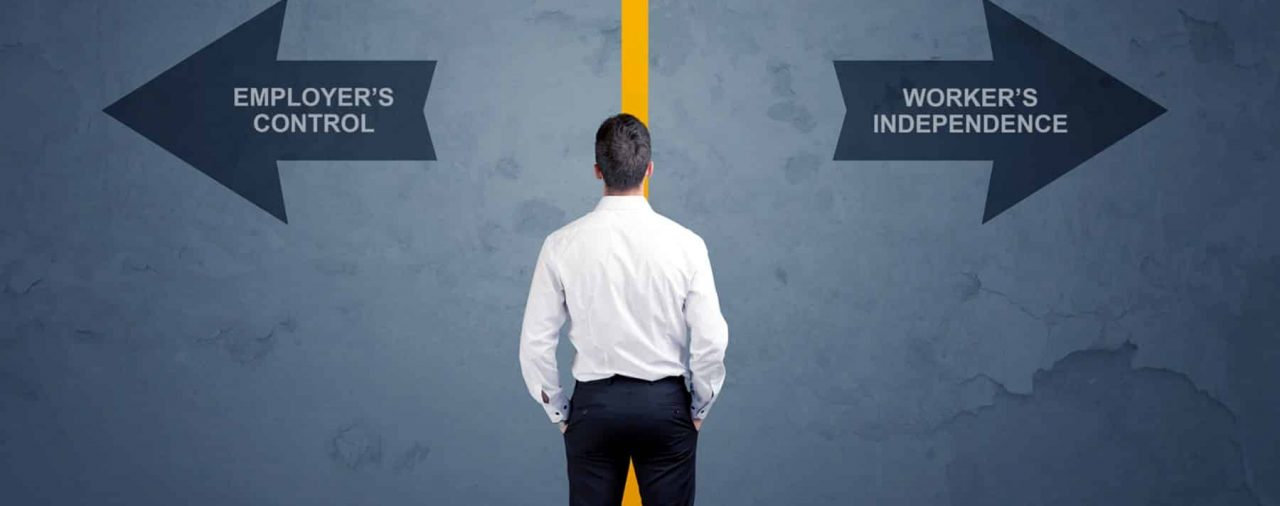Content Highlights
A federal district judge recently upheld the Trump Era independent contractor test. How might this affect employees?
At Gardner Employment Law, we keep our clients informed on important developments within labor laws, both at the federal and state level. If you need guidance understanding the changes affecting contract labor, contact us.
What is the Trump Era Independent Contractor Test?
The Trump era independent contractor test, which went into effect in March 2021, focused on a variety of factors to create the “economic reality” test. The degree of “economic dependence” the worker has on the employer is the primary factor of this test. We reported in “Independent Contractor vs. Employee” that the Department of Labor rescinded the test created during the Trump Era. We explained that this “test would significantly weaken protections afforded American workers.” The Biden administration has worked to change the Trump era independent contractor test. However, that trend recently was thwarted by a federal district judge from Texas who upheld the Trump Era rule.
The economic dependence factor says that a worker is an “employee” to the extent the worker is economically dependent on the employer. The economic reality test determines whether this dependence exists. The economic reality test has two core elements:
|
Factor |
Key Questions |
|
Control Test: The nature and degree of control over the work |
If the answer to any of these questions is “yes,” the result leans toward independent contractor. Answering “no” leads to the conclusion that the worker is an employee. |
|
The individual’s opportunity for profit or loss |
Answering “yes” to any of these questions points towards independent contractor. “No” answers result in the worker becoming classified as an employee. |
A court must consider other factors in the independent contractor test, as well. But these two core factors carry the most weight in the analysis. Other factors include:
- The amount of skill required for the work
- The degree of permanence of the working relationship between the individual and the potential employer
- Whether the work is part of an integrated unit of production
The classic view for determining whether a worker is an employee or an independent contractor turned on whether the employer limited the terms of employment by dictating the details of the work. However, over time that view expanded into considering many factors. The Texas Workforce Commission lists 20 factors. The IRS formerly used this 20-factor test but has attempted to reduce the test to 11 factors.
The “economic reality” test simplifies the previous standard by emphasizing the two core factors. As the Trump administration explained in 2021 in the Federal Register, “The ultimate inquiry is whether, as a matter of economic reality, the worker is dependent on a particular individual, business, or organization for work (and is thus an employee) or is in business for him- or herself (and is thus an independent contractor).”
What Is Important About the “Test” for Independent Contractor Status?
Employers take guidance from the Federal Courts and the Department of Labor on how to classify workers, either as employees or independent contractors. If you are misclassified as an independent contractor, you miss out on several key perks of the employer-employee relationship. An employer provides benefits, such as health insurance, unemployment benefits, and 401k payments, to employees, but not to independent contractors. Employers provide the equipment for employees to use, whereas independent contractors must supply their own equipment, supplies, and materials. The Fair Labor Standards Act protects employees by requiring employers to pay employees minimum wages and overtime pay, but independent contractors do not have this same protection.
You might see why some employers attempt to save money by merely calling workers “independent contractors” rather than “employees.” Courts may hold that this practice of misclassifying employees as independent contractors is a violation of the law. That is another reason why it is important that the test to make this determination is clear.
How To Determine Whether You Are Misclassified as an Independent Contractor
Because courts still come to different conclusions about what factors determine who are independent contractors and who are employees, there is not an easy answer. In this article, we have given you the independent contractor test and questions to ask. If you are still unsure whether your employer is correctly classifying you and other workers, contact us.

